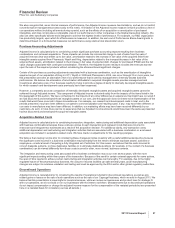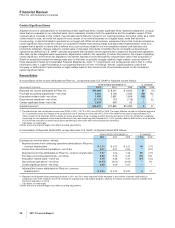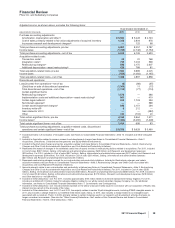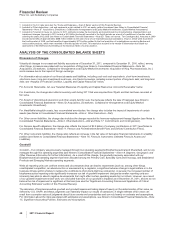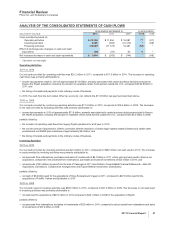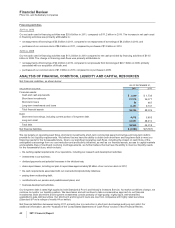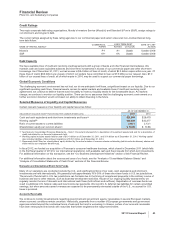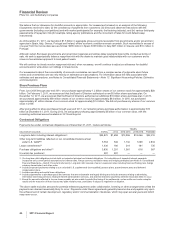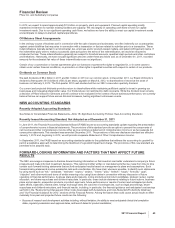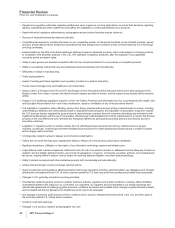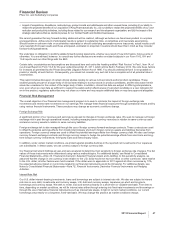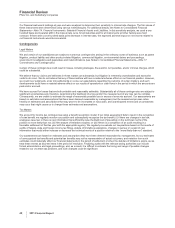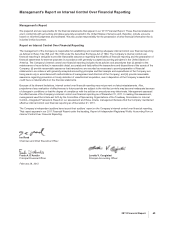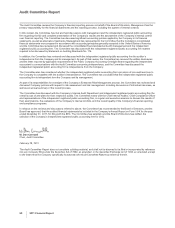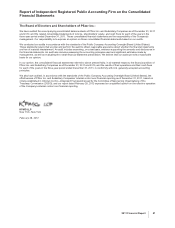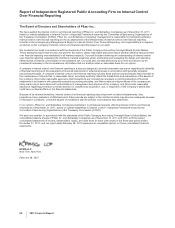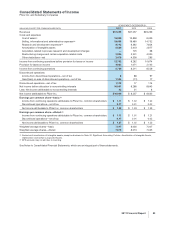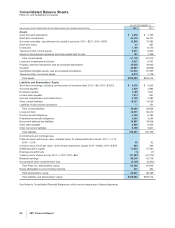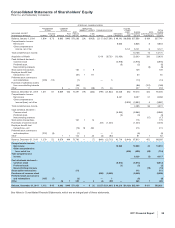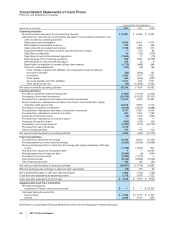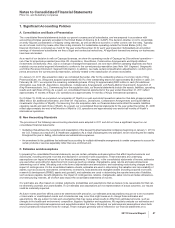Pfizer 2011 Annual Report Download - page 48
Download and view the complete annual report
Please find page 48 of the 2011 Pfizer annual report below. You can navigate through the pages in the report by either clicking on the pages listed below, or by using the keyword search tool below to find specific information within the annual report.
Financial Review
Pfizer Inc. and Subsidiary Companies
•Impact of acquisitions, divestitures, restructurings, product recalls and withdrawals and other unusual items, including (i) our ability to
realize the projected benefits of our acquisition of King Pharmaceuticals, Inc.; (ii) our ability to realize the projected benefits of our cost-
reduction and productivity initiatives, including those related to our research and development organization; and (iii) the impact of the
strategic alternatives that we decide to pursue for our Animal Health and Nutrition businesses.
We cannot guarantee that any forward-looking statement will be realized, although we believe we have been prudent in our plans
and assumptions. Achievement of anticipated results is subject to substantial risks, uncertainties and inaccurate assumptions.
Should known or unknown risks or uncertainties materialize or should underlying assumptions prove inaccurate, actual results could
vary materially from past results and those anticipated, estimated or projected. Investors should bear this in mind as they consider
forward-looking statements.
We undertake no obligation to publicly update forward-looking statements, whether as a result of new information, future events or
otherwise. You are advised, however, to consult any further disclosures we make on related subjects in our Form 10-Q, 8-K and
10-K reports and our other filings with the SEC.
Certain risks, uncertainties and assumptions are discussed here and under the heading entitled “Risk Factors” in Part I, Item 1A. of
our Annual Report on Form 10-K for the year ended December 31, 2011, which will be filed in February 2012. We note these factors
for investors as permitted by the Private Securities Litigation Reform Act of 1995. You should understand that it is not possible to
predict or identify all such factors. Consequently, you should not consider any such list to be a complete set of all potential risks or
uncertainties.
This report includes discussion of certain clinical studies relating to various in-line products and/or product candidates. These
studies typically are part of a larger body of clinical data relating to such products or product candidates, and the discussion herein
should be considered in the context of the larger body of data. In addition, clinical trial data are subject to differing interpretations,
and, even when we view data as sufficient to support the safety and/or effectiveness of a product candidate or a new indication for
an in-line product, regulatory authorities may not share our views and may require additional data or may deny approval altogether.
Financial Risk Management
The overall objective of our financial risk management program is to seek to minimize the impact of foreign exchange rate
movements and interest rate movements on our earnings. We manage these financial exposures through operational means and by
using various financial instruments. These practices may change as economic conditions change.
Foreign Exchange Risk
A significant portion of our revenues and earnings is exposed to changes in foreign exchange rates. We seek to manage our foreign
exchange risk in part through operational means, including managing same-currency revenues in relation to same-currency costs
and same-currency assets in relation to same-currency liabilities.
Foreign exchange risk is also managed through the use of foreign currency forward-exchange contracts. These contracts are used
to offset the potential earnings effects from mostly intercompany short-term foreign currency assets and liabilities that arise from
operations. Foreign currency swaps are used to offset the potential earnings effects from foreign currency debt. We also use foreign
currency forward-exchange contracts and foreign currency swaps to hedge the potential earnings effects from short-term and long-
term foreign currency investments, third-party loans and intercompany loans.
In addition, under certain market conditions, we protect against possible declines in the reported net investments of our Japanese
yen subsidiaries. In these cases, we use currency swaps or foreign currency debt.
Our financial instrument holdings at year-end were analyzed to determine their sensitivity to foreign exchange rate changes. The fair
values of these instruments were determined using various methodologies. For additional details, see Notes to Consolidated
Financial Statements—Note 7A. Financial Instruments: Selected Financial Assets and Liabilities. In this sensitivity analysis, we
assumed that the change in one currency’s rate relative to the U.S. dollar would not have an effect on other currencies’ rates relative
to the U.S. dollar; all other factors were held constant. If the dollar were to appreciate in 2011 against all other currencies by 10%,
the expected adverse impact on net income related to our financial instruments would be immaterial. For additional details, see
Notes to Consolidated Financial Statements—Note 7E. Financial Instruments: Derivative Financial Instruments and Hedging
Activities.
Interest Rate Risk
Our U.S. dollar interest-bearing investments, loans and borrowings are subject to interest rate risk. We also are subject to interest
rate risk on euro debt, investments and currency swaps, U.K. debt and currency swaps, Japanese yen short and long-term
borrowings and currency swaps. We seek to invest, loan and borrow primarily on a short-term or variable-rate basis. From time to
time, depending on market conditions, we will fix interest rates either through entering into fixed-rate investments and borrowings or
through the use of derivative financial instruments such as interest rate swaps. In light of current market conditions, our current
borrowings are primarily on a long-term, fixed-rate basis. We may change this practice as market conditions change.
2011 Financial Report 47


